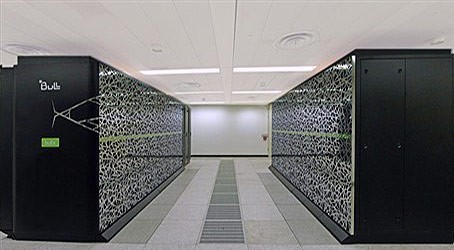The sunset of “Helios”


The International Fusion Energy Research Centre (IFERC), hosted by the Japanese Atomic Energy Authority (JAEA), has been the home of “Helios” one of the world’s most powerful supercomputers. In Greek the word “Helios” means “Sun”, the star that runs on fusion. To those scientists who have dedicated their career to fusion research, it represents the energy of the future and ITER will demonstrate its feasibility. To do so, background work needs to be conducted to extend know-how. The Computational Simulation Centre (CSC) was established in the IFERC Centre in Rokkasho, Japan, and has provided the fusion communities of Europe and Japan the opportunity to use a state-of the art equipment without any cost. Between 2012 and 2016, the computer has been shedding its light on plasma physics, reactor technologies and materials. Earlier this year, “Helios” witnessed its sunset when all shut down operations were completed.
The supercomputer has been one of Europe’s key contributions to the Broader Approach Agreement, giving scientists the opportunity to perform complex calculations in plasma physics. The main tasks of the European contributors (F4E, and CEA on its behalf, through a contract with ATOS/Bull) have been to procure the machine and to take care of its operation and maintenance. Japan had to prepare the building and services, the cooling system, and to contribute to the seamless integration of the IT equipment and services, in particular by providing support to the users.
The operation and day-to-day services have been performed by different teams and suppliers. The tasks of selecting computational projects, assigning resources, and evaluating the scientific output have been given to a panel of independent scientists representing the European and Japanese fusion communities. Through its operation, the usage of the supercomputer has been very intense, exceeding at times 98% capacity on average/week. This very good result has been matched with the excellent management of time slots, accommodating most of the proposals submitted by the scientific community. For instance, there have been reserved sessions for large jobs or specific queues for longer jobs.
Due to the geographical position of the centre, almost all users have been accessing “Helios” remotely. To help users to make the best use of it, training sessions have been organised, both in Europe and in Japan from where scientists had the possibility to submit their proposals. For each submission cycle, a Standing Committee had to organise calls for proposals; select the projects from the proposals by peer review; allocate the computational resources to the selected projects; evaluate the performed projects; and make a written summary report of the calls. The CSC organised regularly training sessions, both in Europe and in Japan, that have been well received by the users. These sessions covered basic training and webinars on specific topics or tools for advanced users.
Users have been able to draw comparisons between fusion experiments such as JET, JT-60U, ASDEX-Upgrade, MAST, Tore Supra, W7X, LHD, Heliotron J. They had the opportunity to run predictive simulations of future devices such as JT-60SA and ITER Moreover, 639 peer-reviewed papers have been prepared using the resources offered by “Helios”. To help scientists carry on with their work during the next two years, Europe has made available Marconi, another supercomputer whose availability is being managed by EUROfusion, and Japan has decided to launch a procurement to purchase a new machine that will be ready by 2020.